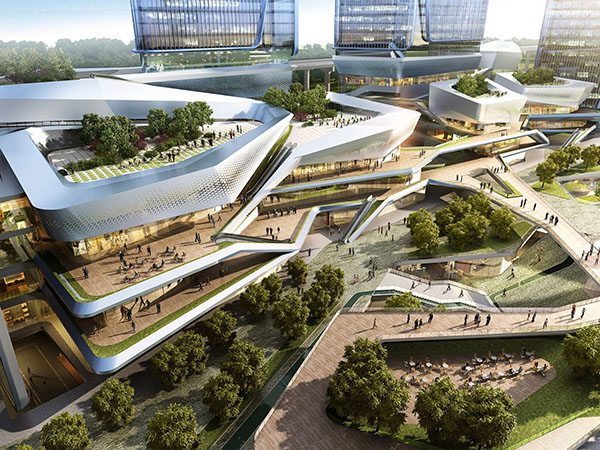The real estate industry is undergoing significant transformations, influenced by technological advancements, changing consumer preferences, and global economic shifts. As we look ahead, understanding emerging real estate trends is crucial for investors, developers, and buyers. Here’s an in-depth look at what the future holds for the real estate market.
1. The Rise of Smart Homes and IoT Integration
Technology continues to shape the housing market, with smart home automation becoming a standard feature in new constructions. The integration of the Internet of Things (IoT) allows homeowners to control lighting, security systems, and appliances remotely, improving energy efficiency and security.
As demand for smart homes grows, real estate developers are incorporating AI-driven technologies to enhance property management. From voice-activated assistants to automated climate control, tech-savvy buyers are willing to pay a premium for homes equipped with the latest innovations. This shift is reshaping property valuation and market demand, making technology a key selling point.
2. Sustainable and Eco-Friendly Housing
Sustainability has become a major focus in the real estate sector. With increasing awareness of climate change, developers are prioritizing energy-efficient buildings and eco-friendly construction materials. Green certifications like LEED and Energy Star are now influencing property values and buyer decisions.
Solar panels, rainwater harvesting systems, and smart energy management solutions are becoming standard features in modern housing projects. Consumers are also looking for communities with green spaces, promoting a healthier and more sustainable lifestyle. As government incentives for green building initiatives grow, the demand for eco-friendly homes is expected to surge.
3. The Impact of Remote Work on Real Estate Trends
The remote work revolution has drastically altered housing preferences. With more professionals working from home, buyers are prioritizing properties with dedicated office spaces, high-speed internet, and ergonomic work environments.
Suburban and rural areas have seen increased demand as remote workers seek larger homes with outdoor spaces. This shift is influencing property values, with city-center apartments experiencing slower growth compared to suburban homes. Developers are now designing properties with co-working spaces, recognizing the long-term impact of remote work on real estate.
4. The Growing Popularity of Co-Living and Shared Spaces
Affordability concerns and lifestyle preferences have given rise to co-living arrangements. These spaces provide fully furnished accommodations with shared amenities, attracting young professionals and digital nomads looking for flexible living solutions.
Co-living developments are designed to foster community engagement, offering shared kitchens, workspaces, and entertainment areas. This model is becoming particularly popular in urban areas where rental costs are high, providing a cost-effective alternative to traditional leasing options.
5. The Shift Towards Mixed-Use Developments

Urban planners and developers are embracing mixed-use developments that combine residential, commercial, and recreational spaces. These developments offer convenience, reducing the need for long commutes and fostering vibrant communities.
Mixed-use properties are appealing to investors due to their diverse income streams, as they attract both residents and businesses. As cities evolve, these projects are expected to redefine urban living, creating self-sustaining environments where people can live, work, and socialize within the same vicinity.
6. The Influence of AI and Big Data on Real Estate Investments
Artificial intelligence (AI) and big data analytics are revolutionizing real estate decision-making. Investors and developers are using predictive analytics to assess market trends, optimize pricing strategies, and identify high-growth areas.
AI-powered platforms provide insights into property valuations, rental trends, and buyer behavior, enabling data-driven investment decisions. As these technologies become more sophisticated, they will play an integral role in shaping future real estate strategies and minimizing investment risks.
7. The Emergence of Virtual and Augmented Reality in Property Viewing
Virtual and augmented reality (VR/AR) are transforming the home-buying experience. Potential buyers can now take virtual tours of properties without physically visiting them, saving time and resources.
Real estate agents are leveraging AR to showcase property renovations and design possibilities, helping clients visualize potential modifications. This technology is particularly useful in the luxury real estate market, where international buyers can explore properties remotely before making purchasing decisions.
8. The Evolution of Real Estate Financing and Digital Transactions
The real estate financing landscape is shifting with the rise of blockchain technology and digital transactions. Smart contracts are streamlining property deals, reducing paperwork, and increasing transaction security.
Cryptocurrency is also making its way into the real estate sector, with some developers accepting Bitcoin and other digital currencies for property purchases. As fintech innovations continue to evolve, real estate transactions are becoming more efficient, transparent, and accessible to a broader audience.
9. Demographic Shifts and Changing Buyer Preferences
Millennials and Generation Z are now dominating the home-buying market, bringing new preferences and expectations. These younger buyers prioritize affordability, sustainability, and technology-driven solutions when selecting properties.
Developers are responding by offering flexible payment plans, smaller housing units, and smart home features. The demand for rental properties is also growing, as younger generations prioritize mobility and financial flexibility over homeownership.
10. Government Policies and Their Impact on Real Estate Trends
Regulatory changes and government policies significantly influence the real estate sector. Interest rates, tax incentives, and housing affordability programs shape market trends and investment opportunities.
Governments worldwide are implementing policies to promote sustainable housing, affordable homeownership, and urban development. Real estate investors and buyers must stay informed about these changes to make strategic decisions in an evolving market.
Conclusion
The future of real estate is being shaped by technology, sustainability, and shifting consumer preferences. As smart homes, eco-friendly construction, and digital transactions become mainstream, the industry is set for transformative growth. Understanding emerging real estate trends will help investors, developers, and buyers navigate the evolving landscape and capitalize on new opportunities.
Whether you’re looking to invest, buy, or develop properties, staying ahead of these trends will be crucial in making informed and profitable decisions in the years to come.
